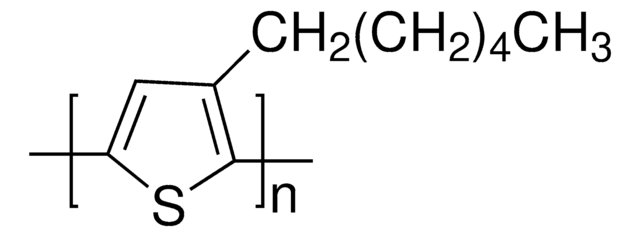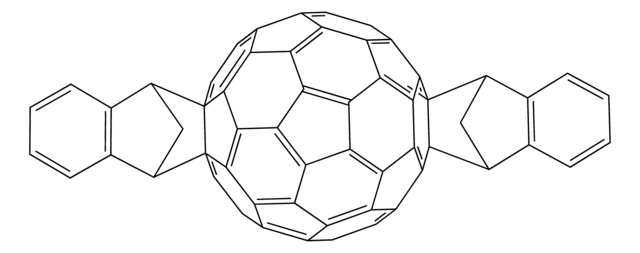推薦產品
描述
Band gap: 1.48 eV
化驗
98%
形狀
powder
軌道能量
HOMO -5.68 eV
LUMO -4.20 eV
一般說明
ITCI-CI is a low band acceptor-donor-acceptor molecule with indacenodithieno[3,2‐b]thiophene (IT) as a central donor atom and 2‐(3‐oxo‐2,3‐dihydroinden‐1‐ylidene)malononitrile (IC) as an acceptor end group. It is also a non-fullerene electron acceptor with a push-pull structure that induces an intramolecular charge transfer and extends absorption.
應用
ITCI-CI can be mainly used in the fabrication of polymeric solar cells with an efficiency that is less than 11% and excellent thermal stability.
ITIC-Cl is a novel non-fullerene acceptor material designed to use in organic photovoltaic devices.ITIC-Cl is a derivative of the ITIC molecule, which is increasingly used to replace fullerene based derivatives for organic solar cells due to significantly improved performances and stability.Compared to ITIC and its other derivatives such as ITIC-F, ITIC-Cl has a narrower bandgap and lower energy levels, and thus will be more suitable to pair with various p-type polymers.ITIC-Cl is readily soluble in most organic solvents used to fabricate organic electronic devices.
儲存類別代碼
11 - Combustible Solids
水污染物質分類(WGK)
WGK 3
閃點(°F)
Not applicable
閃點(°C)
Not applicable
客戶也查看了
An electron acceptor challenging fullerenes for efficient polymer solar cells
Lin Y, et al.
Advanced Materials, 27(7), 1170-1174 (2015)
Highly efficient inverted ternary organic solar cells with polymer fullerene-free acceptor as a third component material
Z. Kan, et al.
Journal of Power Sources, 413, 391-398 (2019)
A tetrachlorinated molecular non-fullerene acceptor for high performance near-IR absorbing organic solar cells
Laventure A and Welch GC
Journal of Material Chemistry C, 6(34), 9060-9064 (2018)
Wenchao Zhao et al.
Advanced materials (Deerfield Beach, Fla.), 28(23), 4734-4739 (2016-04-12)
A nonfullerene-based polymer solar cell (PSC) that significantly outperforms fullerene-based PSCs with respect to the power-conversion efficiency is demonstrated for the first time. An efficiency of >11%, which is among the top values in the PSC field, and excellent thermal
Liang Gao et al.
Advanced materials (Deerfield Beach, Fla.), 28(37), 8288-8295 (2016-07-09)
A nonfullerene polymer solar cell with a high efficiency of 9.26% is realized by using benzodithiophene-alt-fluorobenzotriazole copolymer J51 as a medium-bandgap polymer donor and the low-bandgap organic semiconductor ITIC with high extinction coefficients as the acceptor.
文章
The emerging organic photovoltaic (OPV) technology is very promising for low-cost solar energy production.
The emerging organic photovoltaic (OPV) technology is very promising for low-cost solar energy production. OPV devices can be produced using high-throughput, large-volume printing methods on lightweight and flexible plastic substrates, making them easy to deploy and use in innovative ways.
Professor Chen (Nankai University, China) and his team explain the strategies behind their recent record-breaking organic solar cells, reaching a power conversion efficiency of 17.3%.
我們的科學家團隊在所有研究領域都有豐富的經驗,包括生命科學、材料科學、化學合成、色譜、分析等.
聯絡技術服務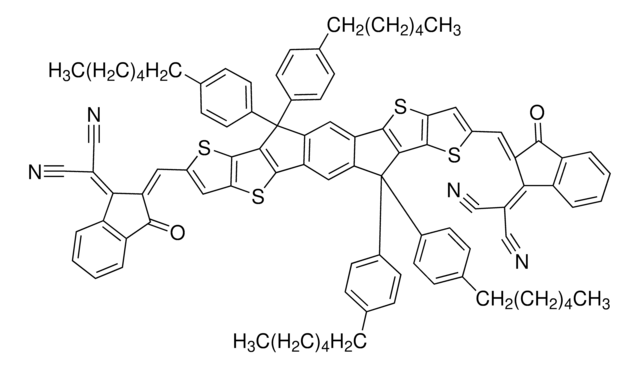



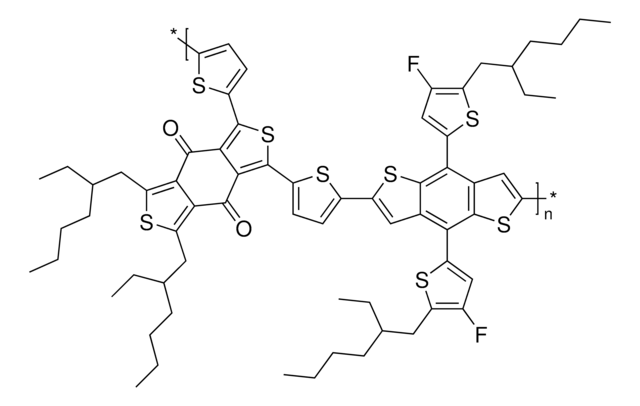
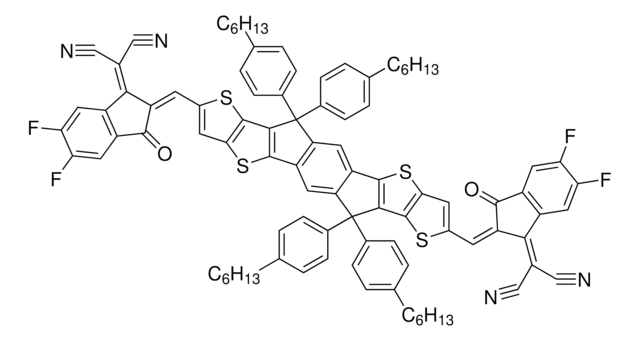
![[6,6]-苯基 C71 丁酸甲酯,异构体混合物 99%](/deepweb/assets/sigmaaldrich/product/structures/716/624/9fb9f2f0-ae99-429f-8d3a-b12267976a4d/640/9fb9f2f0-ae99-429f-8d3a-b12267976a4d.png)


